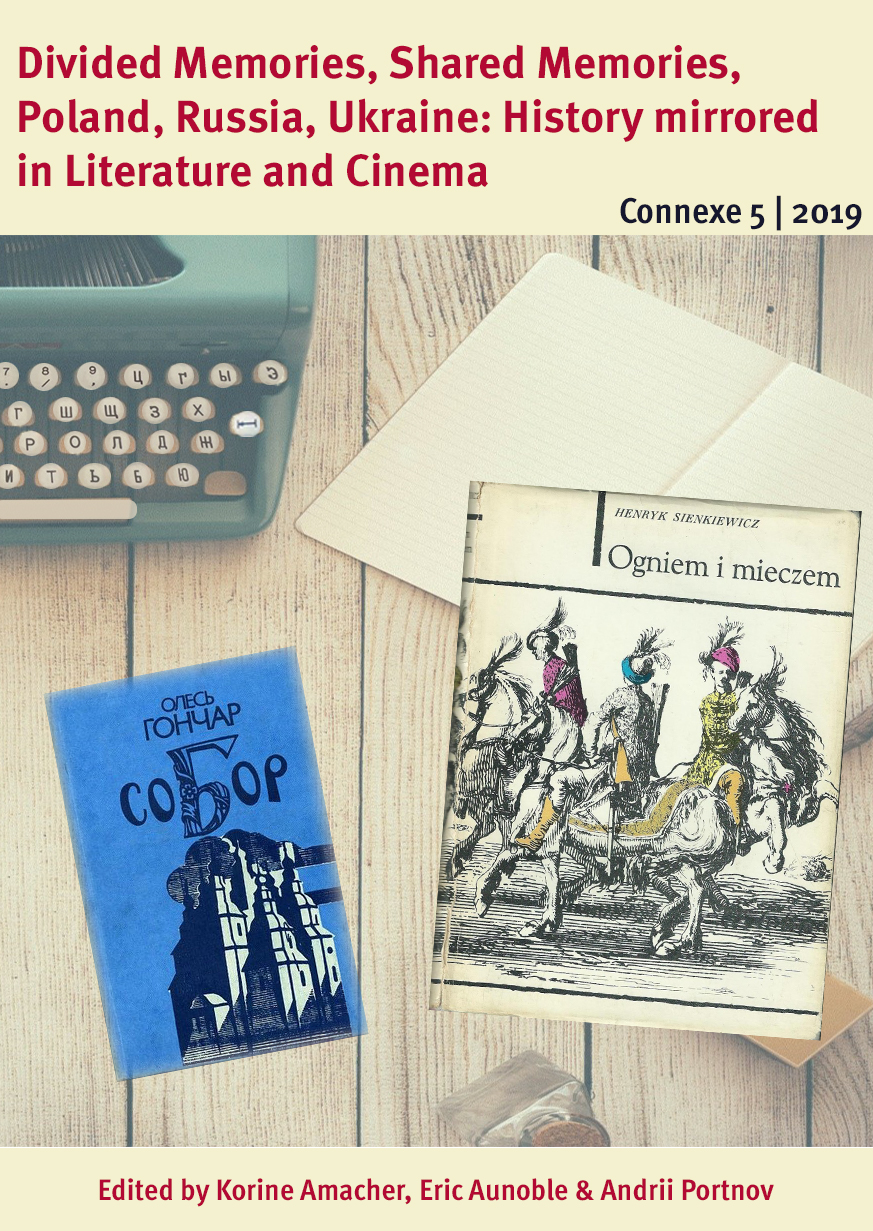Connexe. Les espaces postcommunistes en question(s) est une revue open access qui aborde des problématiques pluridisciplinaires liées aux pays postsoviétiques dans une optique qui allie le passé et le présent. La revue publie un volume par année et accueille différents types de publications : des dossiers thématiques, des articles varias, des recensions ainsi que des articles pour ses rubriques « Champ libre » et « Arrêt sur archives ».
Vol. 5 (2019): Divided Memories, Shared Memories, Poland, Russia, Ukraine: History mirrored in Literature and Cinema

Modern attitudes to sources have radically changed during the last decades. Nowadays the use of literary texts and movies is an accepted practice in historical research. Although a novel or a movie does not itself faithfully recount Ranke’s “wie es eigentlich gewesen” (how things really were), its history is part and parcel of not only cultural but also political and social history. Films and literature are also part of the writing of history in another sense. During a century when mass culture reached the people, films and novels brought a vision of the past and helped build the common memory of nations in Central and Eastern Europe.
The aim of the dossier entitled Divided Memories, Shared Memories, Poland, Russia, Ukraine: History mirrored in Literature and Cinema, edited by Korine Amacher, Eric Aunoble, and Andrii Portnov, is to examine the artistic treatment of certain events and figures described in contradictory narratives in 20th-century Poland, Russia, and Ukraine. The articles examine: (1) Mikhail Bulgakov’s novel The White Guard (1926) set in Kiev during the Civil War; (2) The role of Mykola Khvyl’ovyy (1893–1933), a major writer in 1920s’ Soviet Ukraine, a leader in the struggle for a Soviet Ukrainian literature independent of Russian models; (3) The public interactions between figures as different as Mykola Khvyl’ovyy and the national literary critic Dmytro Dontsov (1883–1973), supporter of “integral nationalism,” despite the physical and ideological borders between Soviet Ukraine and inter-war Poland; (4) Henry Sienkewicz’s novel With Fire and Sword (1882–1888) about the 17th-century Cossack revolts that left their mark on the history and collective imaginations of Poles, Ukrainians, and Jews; (5) The Volhynian Massacre in Soviet Partisans’ Memoirs; (6) The cooperation between Poles and Soviets to produce films about the two major figures of communism, Lenin and Feliks Dzerzhinskiy. This dossier is also supported in the “Open Fora” section by an article on Kazimir Malevich (1879–1935), the father of radical abstract painting.
In the new section “Stop on Archives” of this journal, Volume 5 of Connexe is also enriched by two contributions dealing with: (1) The trajectory of Stalinist Executioners from the Revolution to the Great Terror, and (2) The Life and Fate of Leonid Nikolaev.





